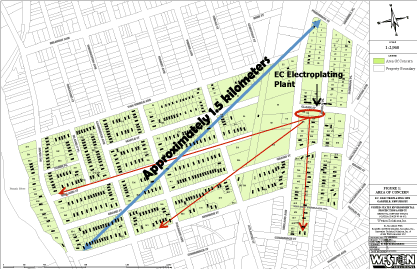Abstract
Following a 1983 chromic acid (hexavalent chromium [CrVI]) spill from a Garfield, NJ electroplating plant, CrVI-contaminated water was found in a local firehouse basement in 1993. An ATSDR public health advisory was issued for the plant site in 2010, and from 2008-2015, fourteen residential properties have required remediation to address CrVI-contaminated dust in the basements. As part of the Community Outreach and Engagement Core of the NYU NIEHS Center, seventy-two Garfield residents aged 18-65 years, participated in a community survey with the goal of identifying concerns related to environmental and community health. Thirty-two percent responded that they ‘didn’t know’ if they were exposed to chemicals or pollutants where they live. This finding suggests a limited awareness of environmental chemical exposures, chromium contamination and/or potential exposure to CrVI. Furthermore, toenail clippings were collected from forty-seven Garfield residents and analyzed for total chromium levels to assess potential long-term exposure. On average, residents living on/inside the contaminated plume area had higher total chromium levels in their toenail clippings than residents living outside the plume area. However, chromium levels for all participants were within the range of historical normal. This study highlights the value of partnerships between environmentally-impacted community’s and academic scientists working together to identify potential contaminant exposures and address public health concerns through research and environmental health education.
Key words
environmental health, community engagement, community research, chromium, groundwater contamination, air quality, water quality
Introduction
Hexavalent Chromium (CrVI) is classified as a Group 1 human carcinogen by the International Agency for Research on Cancer [1], with exposure via the inhalation route considered most potent. Dermal contact to high levels of CrVI can cause skin ulcers, which have been observed in relation to occupational exposure. Overall, respiratory issues, sinus symptoms, kidney damage and lung cancer are the most common adverse effects of CrVI inhalation [2,3]. Hexavalent chromium is rarely found in nature, but commonly used in manufacturing as a pigment for textile dyes, paints, inks and plastics; wood preservatives; metal finishing; chrome plating; and, leather tanning [1,4]. While occupational exposure is fairly well-documented and has been controlled by enhancing regulations [5], environmental exposure to CrVI in groundwater and air continues to be more difficult to mitigate.
Garfield, New Jersey (NJ), a 3 square-kilometer (km) ethnically-diverse city located approximately 20 km west of New York City and 16 km north of Newark, NJ, is home to more than 30,000 people. The median household income in Garfield was just above $48,000 in 2016 and high school graduation was the educational attainment of 83% of adult residents (https://datausa.io/profile/geo/garfield-nj/). Garfield lies at the junction of the chemically- contaminated Passaic and Hackensack Rivers and has a rich history closely tied to industrial production, including textile and chemical manufacturing as well as woolen and silk mills.
Although a majority of the industry in Garfield has been closed-down, what remains is a legacy of pollution that is proving difficult to eliminate.
For example, in December 1983, three tons of carcinogenic chromic acid (containing CrVI) leaked from a corroding underground tank located at the site of a prominent Garfield electroplating company nearby to homes and a day-care facility. As a result, a plume of chromic acid moved through the soil and groundwater of this residential area of Garfield. A decade later, CrVI was discovered infiltrating the basements of several neighborhood homes and a firehouse more than 1.5 km away from the original release. Water samples from the basement of the firehouse were analyzed and found to contain CrVI at a concentration 250 times the NJ Groundwater Quality Standard [6] of 70 mg/L, after which time the firehouse closed. When CrVI-contaminated groundwater evaporates, it leaves behind a toxic and carcinogenic yellow dust made up of chromate crystals that can adhere to the skin and/or become aerosolized and inhaled [7]. In this case, the greatest risk of exposure occurs when CrVI-contaminated groundwater seeps into the basements of residential or commercial buildings where individuals may subsequently and, perhaps unknowingly, be exposed by inhalation to the lingering dried dust.
In 2002, the New Jersey Department of Environmental Protection (NJ DEP) requested the assistance of the Environmental Protection Agency (EPA), to address the infiltration of CrVI-contaminated water into the basements of several Garfield buildings. Despite these events, and continued westerly movement of the CrVI-contaminated groundwater plume [8], it was not until 2011, after an area including 650 homes was designated an “area of concern” by the EPA, that the electroplating site and surrounding neighborhood (within 1 km west of the plant down to the Passaic river), were declared a Superfund site and air and soil monitoring began. As of 2015, more than 500 homes located on the contaminated plume have been inspected by the EPA, and of those, 14 basements were found to exceed the ‘Removal Action Level’ (RAL) for CrVI; thirteen of 14 contaminated properties have since been cleaned by the EPA and had drainage systems installed to prevent further flooding and contamination.
In 2012, not long after the ‘area of concern’ was designated, a partnership was established between the City of Garfield and the New York University-National Institute of Environmental Health Sciences Center (NYU- NIEHS) Center Community Outreach and Engagement Core (COEC). This bi-directional partnership, initiated by the Garfield Public Health Nurse and City Manager, was approved and formalized at an open Town Council meeting. The purpose of the partnership was to provide resources, capacity, education and support to the residents of Garfield who were living with this toxic environmental situation.
Thus, upon Council approval, leaders of the Garfield community, with members of the NYU-NIEHS COEC, developed and prototyped a ‘written needs assessment survey’ that would be administered to Garfield residents between the ages 18-65 years. Findings from the written survey would help gauge their level of knowledge and give voice to their perceptions and concerns regarding current environmental and human health issues within the community.
Based upon community concerns regarding personal Cr exposure, and because toenails can accumulate Cr for approximately 10-12 months as the nail grows [9], toenail Cr burdens were deemed an excellent indicator for long-term total Cr exposure, and therefore selected for this community-based research study. Using data from both the community survey and toenail analysis, Garfield residents and the governing body working with the NYU COEC were able to gauge the needs of the community, build capacity through education of local residents and health care professionals, and identify potential exposures to reduce public health concerns.
Materials and methods
Community survey
A written 15-minute needs assessment community survey was developed by community members and the Garfield Public Health Department in collaboration with the NYU COEC to assess demographics and health and environmental concerns of the residents. The survey was reviewed and approved by the New York University School of Medicine Institutional Review Board (IRB) prior to community distribution. The overall goal of the survey was to assess concerns of the residents regarding the local environment and if/how it could impact their health, with particular emphasis on their thoughts concerning environmental contamination.
The survey was comprised of three main sections entitled: ‘Basic Demographics,’ ‘Environmental Health Risk Self-Assessment,’ and ‘Community Environmental Health Concerns.’ Residents were recruited for the survey via newspaper advertisements, postcard mailings, word-of-mouth, Garfield-sponsored events and in-person visits to Garfield churches, senior housing apartment buildings, Garfield Senior Center, Recreation Center and the Public Library.
In addition, Collaborative Institutional Training Initiative (CITI)-trained COEC associates hosted several evening survey sessions at the Public Library, and the Garfield YMCA and Garfield Health Department. Aggregated survey results were presented to the community in a Town Hall meeting held at the Most Holy Name Church in Garfield. During the meeting, it became very clear that community members desired information concerning their personal exposure to Cr.
Thus, NYU Center scientists moved forward with a research study to assess total toenail Cr levels in surveyed participants.
Toenail collection
As they grow, toenails accumulate certain metals, including Cr for about 10-12 months [11], providing a useful marker of long-term Cr exposure [12]. For this study, Garfield residents who expressed their willingness on the community survey to provide toenail clippings, were contacted by phone and selected based on six inclusion criteria: 1) 18-65-years-of-age; 2) residents of the City of Garfield for > 2 years; 3) non- smoker; 4) not living with a smoker; 5) non-diabetic; and 6) free of metal knee or hip- replacements. Once informed consent was obtained, participants were given a sealed clear package containing: a single pair of sterilized and Cr-free toenail clippers; written instructions on how to clean and cut all 10 toenails; and a small clean collection envelope in which to store the nails at room temperature until returned to NYU. Toenails were returned in a signed and sealed envelope to an NYU CITI-trained COEC associate at a mutually agreed upon place and time. Residents who returned their toenails for analysis were reimbursed $25 for their time and travel. Twenty-two sets (10 toenails per set) of toenails were collected from Garfield residents living on the plume and twenty-five sets from residents living outside the designated plume area.
Toenail analysis
After return of the signed and sealed envelope to the NYU Department of Environmental Medicine, toenails were sent in a blinded-fashion to Dr. J.S. Morris at the University of Missouri (UM, Columbia) [13] for Cr evaluation using Neutron Activation Analysis (NAA), as previously described [14]. Briefly, upon receipt of the toenails by the University of Missouri, nail polish was removed with acetone, samples were sonicated with 10% nitric acid and then washed with high-purity water. The sonicated nail fragments were then captured on filter paper, thoroughly rinsed with high-purity water, and freeze-dried. The cleaned and dried samples were gravimetrically transferred to a pre-cleaned and labeled high-purity quartz vial, which was then vacuum-heat sealed. Toenail test samples, standards and quality control samples were collected in a single bundle and irradiated for 50 hours in a graphite reflector of the UM Research Reactor and at a thermal neutron flux of approximately 6.5 × 1013 n/cm2/sec. After an approximately 3-week “cooling” period, the activated samples were measured for 2-hr each using a high-resolution gamma-ray spectrometer coupled to an automatic sample changer. For Cr, the net peak area for the 320 keV gamma-ray from the decay of Cr-51 was quantitatively determined for each sample. All samples were normalized for decay and total Cr concentrations and compared to Cr toenail standards [15]. Total Cr concentrations were reported as micrograms (µg) total Cr per gram (g) of toenail sample (µg/g; ppm).
Total toenail Cr concentrations were evaluated in association with the participant’s age, sex and home address. Specifically, toenail Cr values were compared between: residents living on the plume vs. those living outside the plume; and male and female participants. Cr concentration relative to the resident’s age (when available) and living distance from the source was also evaluated.
Statistical analyses
A non-parametric Mann-Whitney-Wilcoxan rank sums test was used to compare total Cr levels in toenail samples of both male and female participants living on or outside the plume.
Regression analyses were used to assess correlations between total toenail Cr levels and, 1) distance from plume, and 2) age in the aforementioned groups. SPSS statistical software was used for the community survey data analysis.
Results
Community survey
Seventy-two surveys were administered to Garfield residents and data were analyzed in cooperation with the Immigrant Health and Cancer Disparities Service at Memorial Sloan Kettering Cancer Center. Two hundred individuals were asked to participate in the survey during local events (e.g., Garfield Fire House Wet Down, visiting circus, movie day at the library, church services), but the majority were either not Garfield residents, not interested or did not have the time to participate.
Demographics
The majority of respondents were female (57%), 76.4% self-identified as white, 1.4% as African American, and 15.3% as other; 30% of respondents self-identified as Hispanic or Latino. Most respondents who finished the survey (n = 72) reported that they had completed ‘some college’ (31%), followed by those who ‘finished college’ (24%) and those who ‘finished high school’ (22%) (Figure 1).
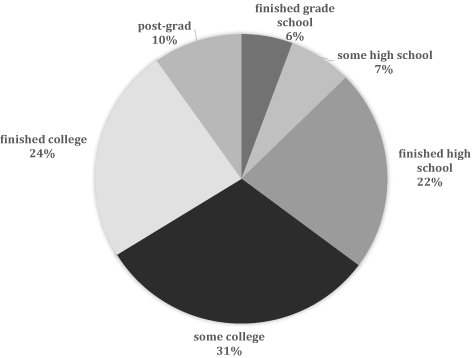
Figure 1. Level of completed education by Garfield survey respondents
Environmental health risk self-assessment
More than 30% of the respondents did not know whether they were exposed to ‘chemicals or pollutants’ at home, and more than 40% reported that they have not been exposed where they live (Figure 2A). Likewise, a majority of respondents reported that they had not (59%) or did not (17%) know if they had been exposed to chemicals or pollutants where they work (Figure 2B). The top three individual environmental and/or health concerns that emerged from the survey were: 1) water quality; 2) air quality; and 3) cancer, followed by crime, asthma, medical issues, respiratory issues, immune system issues, odor-emitting industries and safe food rounding out the top ten (Figure 2C).
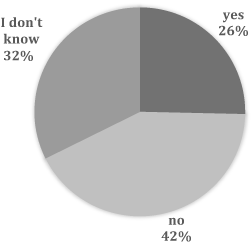
Figure 2A. Level of completed education by Garfield survey respondents
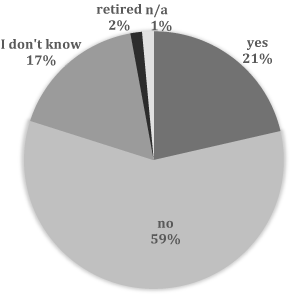
Figure 2b. Percent of Garfield (NJ) Community Survey responses regarding exposure to chemicals or pollutants where they work
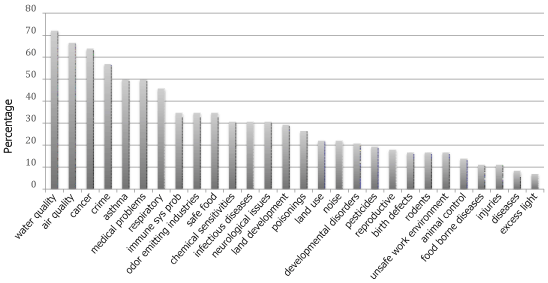
Figure 2c. Percentages of self-identified environmental and/or health issues of individual concern reported by Garfield (NJ) community survey respondents
Community environmental health concerns
Respondents were asked to identify their top environmental health priorities for the entire Garfield community. Industry-generated air pollution (46%), water pollution (46%) and chemical spills (44%) were the top three responses. Community-based environmental health priorities that complete the top 10 responses were water treatment, natural sources, mold, sewage treatment, pollen, cigarettes and sewage disposal (Figure 3).
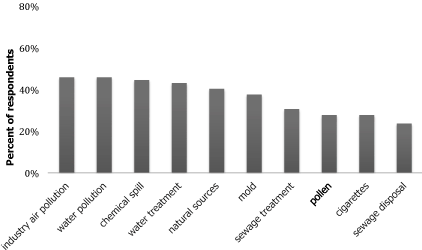
Figure 3. Top 10 self-identified environmental health concerns identified by respondents as being priorities for Garfield (NJ) community
n = 22-25 sets of toenail samples per group
*Significantly different (p<0.002) from toenail samples collected from non-plume residents
a = The range of total chromium levels found in toenail samples was 0.064- 4.423 ug/g
Toenail chromium analysis
Out of the 47 participants who supplied toenail clippings, 33 (or 70%) were female and 14 (30%) were male. As shown in Figure 4, total Cr levels in toenails of residents living directly on the contaminated plume were significantly higher than those residents living outside the CrVI-contaminated plume area (p < 0.002). When analyzed by sex, male residents living on the plume had significantly higher levels of total Cr compared to their sex-matched, non-plume residing counterparts (p < 0.001), and significant levels above female residents living on the plume (p < 0.01) (Figure 5).
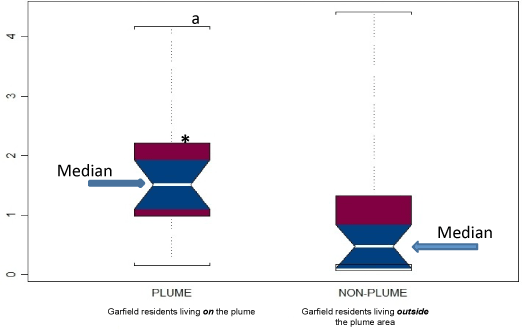
Figure 4. Total chromium levels in toenail samples from Garfield residents living within the plume area vs. outside the plume area
*Significantly different from male control residents living outside the plume (p<0.001)
** Significantly different from male counterparts living in the plume (p<0.01) (Wilcoxan Rank Sum Test)
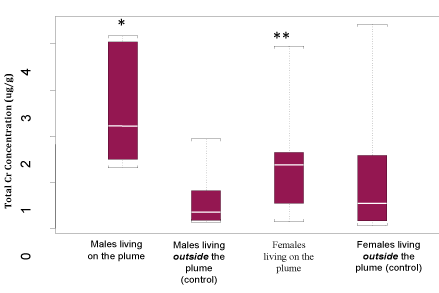
Figure 5. Total toenail Cr levels in adult males and females living on or outside of the plume area
Figure 6 suggests a relationship (albeit, not significantly) between living distance from the plume and total toenail Cr levels, i.e., as the residence distance away from the plume increased, total toenail Cr levels decreased. While no significant difference in age was observed between respondents living on the plume vs. outside of the plume (49- vs. 47-years-of-age, respectively), overall total Cr levels increased slightly, although non-significantly, in both male and female participants with increasing age (Figure 7).
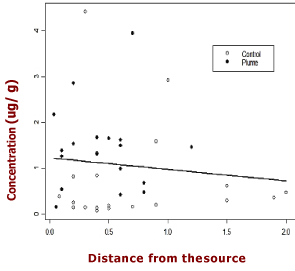
Figure 6. Total chromium concentration in toenails versus locality distance away from the EC Electroplating source. [R =0.054 (control), R=0.012 (plume)]
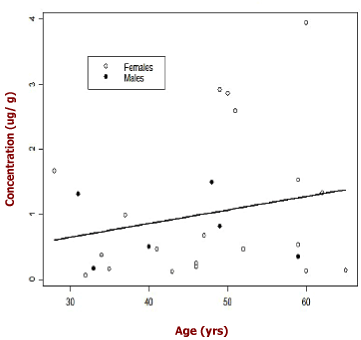
Figure 7. Total toenail chromium concentration in Garfield residents versus age [R=0.224 (control), R=0.166(plume)]
Discussion
The overall goal of this community-based study was to identify environmental concerns within the Garfield community and provide the community, at large, with information and educational materials that would help inform them on the toxicology, exposure pathways and health effects of heavy metal toxicity, with particular emphasis on Cr.
The Garfield, NJ Needs Assessment Survey was developed bi-directionally with Garfield community leaders and NYU in English and Spanish. The purpose of the study was to query the health and environmental concerns as well as self-assessed risks of residents living within the Garfield community, during the EC Electroplating site demolition and remediation. Outcomes of the survey indicated a concern by the respondents for CrVI exposure both environmentally and personally. Interestingly, while the results from the survey demonstrated that the majority of respondents did not feel (or did not know) that they had been exposed to chemicals or pollutants where they live or work, water and air quality were the top two environmental issues of concern. These data suggest a more global concern, perhaps due to media or local news coverage of the Cr spill, versus concerns of direct or personal exposure. That is to say, it is possible, though not queried in this study, that residents could have heard or read about the Cr contamination in their town, but don’t necessarily think it affects them directly. In addition, when it comes to the thought of personal exposure versus an overall concern for the environment in Garfield, the disconnect could be associated with “psychological distancing” [16]. It could be difficult for the individual to consider the personal effect that exposure to the contamination would have on one’s life and circumstances [17].
In addition to self-identified personal health issues related to the environment, residents were queried on their concerns related to Community Environmental Health and what, in their opinion, were the priorities for the city moving forward. In this case, air and water pollution were again the top two concerns with chemical spills a close third. These results again suggest a possible disengagement between perception and reality, i.e., why the concern about air and water pollution, if the majority of respondents do not think they are being exposed at home or work?
Following survey analysis, several town hall meetings, facilitated by the Garfield public health nurse with NYU scientists, were held to inform residents and medical professionals about: the toxicology of hexavalent Cr; potential sources and human exposure routes to Cr and other toxic metals; potential health effects associated with CrVI exposure; and mitigation/intervention/prevention strategies. Report-back and informational sessions were held with the hope of filling any potential gaps in knowledge and to build capacity among the community residents through knowledge.
Although residents were not concerned about direct personal exposure at home or at work, they did have an overall concern regarding environmental air and water quality, which aligns with the elevation in total Cr levels in toenails from residents living on/nearby the contaminated plume. Analyses of the toenail Cr burdens revealed that residents living on the Cr-contaminated plume (≤ 2.0 km from the EC electroplating company source) had, on average, higher levels of toenail-associated Cr compared to those residents living outside the plume.
Though these data appear suggestive of a link between home locality in relation to the plume and toenail Cr burden, there are several points that should first be considered. These include the small number of participants who provided toenails, and that only a single time point was considered for these analyses. Unfortunately, there was little interest by the community in general, or from those who participated in the toenail analysis, in a follow-up toenail sampling or in collection of blood samples that could reveal more recent Cr exposure. Thus, due to study limitations, it is impossible to reach any definitive conclusion regarding the relationship (if any) between vicinity to the chromate source and total toenail Cr burdens.
Although total Cr toenail levels were elevated in participants living on the contaminated groundwater plume, compared to those living outside of the plume, levels in both groups were, on average, similar to toenail Cr levels reported nationwide [18]. Given that total Cr levels measured in selected Garfield residents did not exceed national values, we concluded that there was little concern regarding long-term health outcomes for those tested individuals.
In this study, total toenail Cr levels differed significantly between men and women living within the plume area. In this case, men had significantly higher Cr levels (on average) than their residence-matched female counterparts or their male control counterparts living outside the plume area. While suggestive, given the small number of men who participated in this pilot study, no definitive conclusions can be reached in this regard. While workplace environments for some occupations (e.g., painters, welders, cement workers) could be a confounding variable for the increased total toenail Cr observed in the male participants, it is unclear whether this is the case in this study, as only a small sample size of participants were willing to provide their current occupation.
As with most of these types of survey studies, there are limitations that must be considered when interpreting the results. The first of which is survey bias. In this particular case, there is the possibility that residents who were more familiar with the issue of Cr contamination or those who lived closer to the plume responded in larger numbers, indicating a deeper concern for environmental health than what really exists in the overall community.
Another potential limitation had to do with recruitment and linguistic barriers to communication in the Garfield area. Over 30 languages are spoken within Garfield, and while the survey was available in English, Spanish and Polish, most instruction and communication were conducted in English, which could have limited the number of residents willing to participate.
Overall, while the limitations of this study are recognized, the outcomes of this community-engaged research were deemed a success by the residents themselves, in that the survey and exposure findings served to: mitigate some community fears regarding environmental air and water quality; enlighten local physicians about potential health effects and clinical symptoms associated with CrVI inhalation; provide best practices for clean-up of any dried Cr residue that may still exist in their basements or seep in during the next rainstorm; build capacity related to environmental issues in Garfield; and demonstrate the importance of scientists and community members working together to develop a strong and sustained community infrastructure. Also, a significant result of this study is the unique opportunity that the NYU NIEHS COEC has had over the last seven years to continue to engage the Garfield community, serving as environmental advisors, developing web-based informational networks and building environmental knowledge amongst its residents.
Acknowledgement
This project was supported by the NYU NIEHS Center COEC ES000260.
View Supplementary Data
References
- International Agency for Research on Cancer, World Health Organization (2012). Arsenic, metals, fibers and dusts. Volume 100C, A review of human carcinogens.
- Beaver LM, Stemmy EJ, Schwartz AM, Damsker JM, Constant SL, et al. (2009) Lung inflammation, injury, and proliferative response after repetitive particulate hexavalent chromium exposure. Environ Health Perspect 117: 1896-1902. [Crossref]
- S. Department of Health and Human Services, Public Health Service, Agency for Toxic Substances and Disease Registry (ATSDR) (2012) Toxicological Profile for Chromium.
- Blade LM, Yencken MS, Wallace ME, Catalano JD, Khan A, et al. (2007) Hexavalent chromium exposures and exposure-control technologies in American enterprise: results of a NIOSH field research study. J Occup Environ Hyg 4: 596-618. [Crossref]
- Hexavalent Chromium (2009) OSHA 3373-10. Available from: osha.gov
- United States Environmental Protection Agency Community Update, 2017: Available from: https://semspub.epa.gov/work/02/528312.pdf
- Burke T, Fagliano J, Goldoft M, Hazen RE, Iglewicz R, et al. (1991) Chromite ore processing residue in Hudson County, New Jersey. Environ Health Perspect 92: 131-137. [Crossref]
- Record of Decision: Garfield Groundwater Contamination Superfund Site (2016) Environmental Protection Agency City of Garfield, Bergen County, NJ. Available from: https://semspub.epa.gov/work/02/377072.pdf .
- Hashemian M, Poustchi H, Pourshams A, Khoshnia M, Brockman JD, et al. (2016). The Nail as a Biomonitor of Trace Element Status in Golestan Cohort Study. Middle East J Dig Dis 8: 19-23. [Crossref]
- Abdulrahman FI, Akan JC, Chellube ZM, Waziri M (2012) Levels of Heavy Metals in Human Hair and Nail Samples from Maiduguri Metropolis, Borno State, Nigeria. World Environment 2: 81-89.
- Yaemsiri S, Hou N, Slining MM, He K (2010) Growth rate of human fingernails and toenails in healthy American young adults. J Eur Acad Dermatol Venereol. 24: 420- 423. [Crossref]
- Longnecker MP, Stampfer MJ, Morris JS, Spate V, Baskett C, et al. (1993) A 1- y trial of the effect of high-selenium bread on selenium concentrations in blood and toenails. Am J Clin Nutr 57: 408-413. [Crossref]
- Cheng TP, Morris JS, Koirtyohann SR, Spate VL, Baskett CK (1994) The analysis of human nails for 24 elements via k0 and cyclic neutron activation analysis. Nuel Instr Methods Phys Res A 353: 457-460.
- Garland M, Morris JS, Rosner BA, Stampfer MJ, Spate VL, et al. (1993) Toenail trace element levels as biomarkers: reproducibility over a 6-year period. Cancer Epidemiol Biomarkers Prev 2: 493-497. PMID: 8220096 [Crossref]
- Son J, Morris JS, Park K (2018) Toenail Chromium Concentration and Metabolic Syndrome among Korean Adults. Int J Environ Res Public Health 15: 682 [Crossref]
- Trope Y, Liberman N (2010) Construal-level theory of psychological distance. Psychol Rev 117: 440-463. [Crossref]
- McDonald, Rachel I, Chai, Hui Yi, Newell BR (2015) Personal experience and the psychological distance of climate change: An integrative review. J of Env Psych 44: 109-118.
- Garland M, Morris JS, Colditz GA, Stampfer MJ, Spate VL, et al. (1996). Toenail trace element levels and breast cancer: a prospective study. Am J Epidemiol 144: 653-660. [Crossref]










